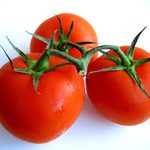Hungry for More
by Daniela Morales
College is a time for change. A change of location, social life, and overall lifestyle. But what many people do not realize is that with this switch comes a change of diet as well. Most everyone is aware of the infamous “freshmen fifteen”; however there are more dangers than just gaining weight. College students have an intense schedule: going from class to class, attending meetings, and “studying” into the late hours of the night. All these activities often lead to eating less or even skipping meals, which is ultimately detrimental to one’s wellness. One of the largest issues that students face in their diets is the lack of essential food groups. Two of the most insufficient food groups among college students’ diets today are fruits and vegetables.
According to CDC guidelines, two to two and a half cups of fruit and two and a half to three and a half cups of vegetables should be consumed a day. However, many students may not even be eating one serving a day. Fruits and vegetables are often not easily accessible and are costly for students. So what is UC Berkeley doing to prevent students’ lack of those vital fruits and veggies? Shawn Lapean, Executive Director of Cal Dining—part of UC Berkeley’s Residential and Student Services Program—says that UC Berkeley dining is moving towards a more plant-focused menu. Cal Dining and all of the locations that collaborate with the program are working to align with the Menus of Change University Research Collaborative. The program’s goal is to “be transparent”, “reward better agricultural practices”, and “focus on whole, minimally processed foods” among other objectives. A thorough compilation of the Collaborative’s guidelines can be found here.
Along with striving for a more vegetarian-friendly, plant-based diet, Lapean also stated that fresh fruits and vegetables are offered at all of their facilities for every meal. Sustainability, seasonality, and cost are the three main components that determine which fruits are available in the dining halls and at Cal Dining sponsored vendors. How-ever, while fruits and vegetables are offered at these establishments, they may not be cost-effective for students on or off a meal plan. Fruit cups can range from $3.95 to about $4.95 depending on the fruit and may be a second thought when compared to a GBC favorite, the $7 burrito. Students may have also seen vendors selling mangoes, strawberries, and other produce in front of the Golden Bear Cafe Mondays through Thursdays. These items can also be purchased with meal points, but will also be a bit more costly. If you choose to spend your meal points at a dining hall and are searching for a fruit to snack on, bananas, oranges, pears, and apples are served in all the dining commons year-round. Other fruits make appearances in different seasons. The list of fruit availability for the dining halls can be found here.
Although there are over 3,320 undergraduates with a meal plan here on campus and “more optional meal plans to choose from than any other college food service,” ac-cording to Lapean, there are other options when looking for affordable produce to round off that balanced diet. Some inexpensive grocery stores in the Berkeley area that are known for their produce include the Berkeley Produce Center on Shattuck, and the Berkeley Student Food Collective on Bancroft. These locations make it possible for stu-dents that are off a meal plan, or are not willing to pay as much for their produce, to get the recommended values of fruits and vegetables in their diet.
While it is difficult to fit a meal into an already busy day, student’s can do their best to meet the new USDA dietary standards. If there are other dietary restrictions or obstacles that students would like help addressing, there are resources on campus! The Tang Center offers such nutrition resources, and Cal Dining is in the process of hiring a new dietician to help manage the nutrition education program. With many options and resources both on and off campus, students can take a step in the right direction if they choose to do so.



